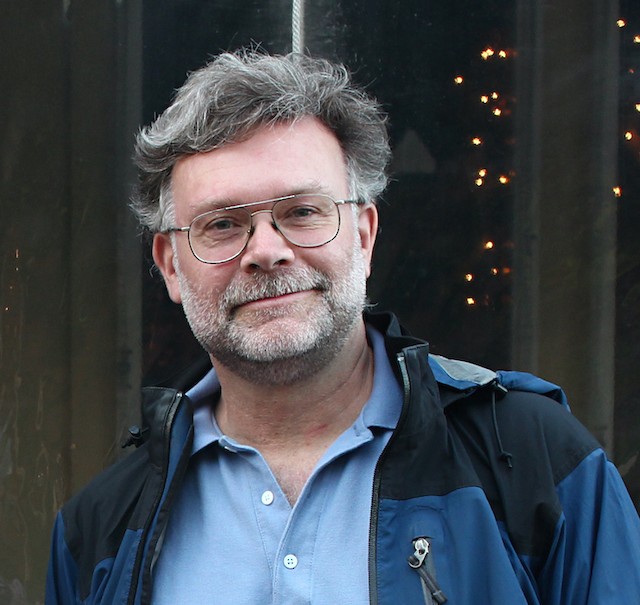Lance Benner records audio of birds while mountain biking at night. He has regular routes and stops, and catches some recordings opportunistically, like an American dipper singing. Living in the foothills of the San Gabriel mountains, he does most of his birding around his home. But he has also done some extensive traveling. As a Planetary Scientist at NASA’s Jet Propulsion Laboratory, Dr. Benner attends asteroid conferences around the world. He takes advantage of these trips to see wolves and wolverines in Finland, and to vacation in Patagonia. When asked about his most memorable experience with wildlife, he listed a half dozen experiences, including seeing a brown bear 10 meters away while he was behind a bird blind, and his first pelagic birding trip off Southern California. On that trip he saw brown boobies, jaegers, and an enormous pods of dolphins. He “didn’t even know [fin whales] existed before seeing them as large as the boat.”

His trip to Volcán Atitlán in Guatemala seemed to make the biggest impression, acoustically. The sounds were so magnificent to him, that he bought recording equipment immediately after his trip. If he had had the equipment before, he would have been able to make a recording of the Brown-backed Solitaire’s song, a song he described as “extraordinary”, and no doubt one that he would enjoy listening to again.
When Red Crossbills irrupted in 2012-2013, Benner was excited. Red Crossbills can be identified to type according to flight call. Ten unique flight calls have been documented; they may be linked to differences in morphology, ecology, and genetics. Brenner was urging people to get flight call recordings to identify the types. Type 2 Red Crossbills had been in the San Gabriel mountains before, but during this irruption, Type 3’s were being discovered. At presentations he gave to his local Audubon group, he urged birders to use eBird, recognizing the power of citizen science to track the red crossbill. And, because he is a scientist, after consulting with a colleague, he published his findings in Western Birds in 2014 with his co-authors for future and public reference.
Red Crossbill (Ponderosa Pine or type 2) Loxia curvirostra (type 2)
Red Crossbill (type 2) Loxia curvirostra (type 2) © Lance Benner ML 31560351.
Red Crossbill (Western Hemlock or type 3) Loxia curvirostra (type 3)
Red Crossbill (Western Hemlock or type 3) Loxia curvirostra (type 3) © Lance Benner ML 21650031
It seems that Dr. Benner excels at observations. As the leader of the Asteroid Radar Research program, he tracks and studies asteroids to understand what role they play in the development of the solar system and support NASA missions. He measures the distance to asteroids and their velocity to better understand their orbit, and uses a 70 meter diameter telescope to take photos of asteroids to understand their shape and material. After such work activities as observing an asteroid buzzing by at 8 times the distance of the moon, Dr. Benner needs an outlet for his creative interests. He believes that eBird “is the most important thing in citizen science,” and appreciates that he can easily contribute to the Macaulay Library through eBird. It lets him do “a lot more than [just] looking.”
Lance Benner’s equipment
Since December 2015, he uses a Sony PCM-M10 digital recorder most often. He previously used the Olympus LS-10, Olympus LS-10S, a Marantz PMD-670. Rarely, he will use the voice memo app on an iPhone 5S or a Canon A720IS point & shoot camera in video mode. He uses a Sennheiser ME62 mic with a 22-inch Telinga parabola if he is near a car, his house, or on short hikes. On hikes, while on trips, and during mountain bike rides, he uses a Sennheiser ME67 long shotgun mic or Sennheiser MKE-400 short shotgun mic due to their light weight and portability.


